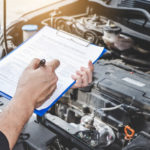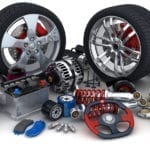Buying a vehicle is one of the most exciting times in a person’s life. It is one of the biggest and most important decisions a person will ever make, and can change the entire way they conduct their day to day life. Owning a vehicle empowers people to go where they want to go, at the drop of a hat. With gas prices at their lowest in over a decade, this is even more true than it has been in the past. Owning a car is owning the opportunity for endless adventures. The initial excitement that comes with owning a vehicle often fizzles out after only a few months. The daily grind becomes monotonous, car maintenance services begin calling, and rather than seeing the possibility for adventure, you see money flying out of your wallet.
Rather than seeing your vehicle as the largest multi-purpose tool you have ever owned, you start despising the money it is costing you to keep it in working order. This unfortunate attitude towards vehicle ownership is all too common, but it can also be avoided. By following a simple monthly schedule, you can ensure that your vehicle remains the adventure you bought it for, and not the money pit you dread it turning into.
Change Your Attitude
Before we get into what you need to do to keep your vehicle in good working order, let’s take a minute to adjust the entire way you think of your car. Whether it’s brand new, five years old, or on it’s very last leg, it’s important to start thinking of your vehicle as your most important asset. It reliably gets you to the office and back each day, safely transports the kids to school and their extra curricular activities, and even manages to get you across town to the gym every afternoon. It’s purpose in your life extends far past all of these day-to-day activities, and while it may not look as pretty as you had hoped, it gets the job done.
The minute we change our attitude towards our vehicle, is when we begin to actually appreciate it for what it is, and all that it does for us.
Take Care of Your Vehicle
If you take care of your vehicle, it will continue to take care of you. A vehicle that is kept clean and uncluttered, will be more appealing to you and your passengers. In turn, you will more thoroughly enjoy the time you spend behind the wheel, rather than dreading it.
Aside from keeping the interior mess free, and the exterior shiny bright, it is also imperative that you keep up with regularly scheduled maintenance. Neglecting simple tasks such as an oil change and tire rotation, can end up having major repercussions on the life of your vehicle, and your wallet.
Avoid Vehicle Neglect
The best way to combat neglect, is to keep track of your vehicle’s maintenance by logging it down in an actual notebook. This may seem archaic and silly, but with a little determination in the very beginning, you will soon be keeping track of everything your vehicle does without a second thought. Your vehicle maintenance log will help improve the resale value of your car, will help you keep up with regularly scheduled maintenance demands, and can even be a resource for diagnosing any future issues your vehicle may have. With all of those benefits, why wouldn’t you keep a maintenance log?
Vehicle Maintenance Logs 101
The benefits of keeping a vehicle maintenance log has you intrigued. You like the idea of getting more for your vehicle when you decide to sell it, and the ease of keeping up with maintenance doesn’t sound too bad, either.
Getting started with a vehicle maintenance log is the hardest part, and requires the most effort. Luckily, this initial step is the quickest. Once you get a good system put into place, the rest of the process will go smoothly.
We recommend that vehicle owners keep a few different types of vehicle logs to ensure complete and total overall coverage. A monthly, quarterly, and biannually maintenance log should be kept for every vehicle in ownership. If you are into spreadsheets and technology, there are a lot of different tools you can find online to set up a vehicle maintenance log. We are fans of the old fashioned way of keeping a notebook and pen in your glovebox. Not only does this make keeping a maintenance log convenient, but we think that drivers are more likely to complete it when it is within arm’s reach.
Monthly Maintenance Log
At the beginning of each month, run through this checklist to ensure your vehicle is running properly. Plan about 15 minutes each month to complete this list, and spend the rest of the month confident that your vehicle is in tip-top shape.
- Check Belts and Hoses: Pop open the hood of your vehicle, and check for frayed or worn belts. If anything looks iffy, it may need to be replaced. Rotten rubber, bulging on the belt itself, or crumbling hoses, are all bad signs. Get it checked before it leads to an expensive repair down the road. Regardless of whether everything looks great, or there are a few questionable parts, make a note in your maintenance log for future reference.
- Check Oil Level: Remove the dipstick and check to see how the level is. If it is low, be sure to get in for an oil change. If you aren’t due for an oil change for quite some time, then you will want to check for any possible leaks. Again, make a note in your log regarding your observations.
- Note Tire Pressure: Check the pressure on all of your tires, and add air if the tires need it. If one tire is noticeably lower than the other tires, you should check for leaks or other signs of damage.
- Check Coolant: Take a look at your engine’s coolant level, and be sure to add coolant if it appears to be low.
Quarterly Maintenance Log
Every three months or 3,500 miles, be sure to tick off each box on the checklist below:
- Oil: Get your oil changed and replace the oil filter on your vehicle. If your owner’s manual has a different suggestion for oil change intervals, it is important to follow what the vehicle’s manufacturer recommends.
- Battery: Take a look at the vehicle battery and make sure that there is no sign of corrosion or wear. If there is, clean it thoroughly to ensure there is no blockage to the battery itself.
- Fluids: Make sure your windshield washer fluid is full, and add extra if needed. Also check your brake fluid, transmission fluid, and power steering fluid. If any of these levels is not where it should be, take your vehicle in for an inspection.
- Air Filter: Remove your vehicle’s air filter, and if it is dirty, replace it. This is one of the cheapest and easiest at-home fixes that can end up saving you and your vehicle in the future.
Biannual Maintenance Log
Every six months or 7,000 miles, it is important to check your vehicle for these other signs and possible issues. Write your observations down in your notebook, and head to a mechanic if any problems arise.
- Wiper Blades: Check their condition, and replace if they seem worn or are not performing properly.
- Check Signals: Grab a buddy and have them stand outside while you test the headlights, brake lights, turn signal indicators, and horn is working properly.
- Brake Pads: Check for above-normal wear and tear, and have replaced if necessary
- Spare Tire: Be sure your spare tire is inflated and ready to perform if you need it in the event of a roadside emergency.
- Exhaust System: Check out the exhaust for any visible signs of damage, loose parts, or rust.
If you follow these recommendations for vehicle maintenance logs, your vehicle will continue to serve you in the best way that it possibly can. You will rest easy knowing that the possibility of surprise costs and extra expenses are less than likely, because you know your car and have taken steps to make sure it is in perfect working order.







